

 The South African
The South African
Editor's note: Part One of this article was published in Military History Journal Vol 15 No 6 December 2012, pp 220-225. In it, the authors described the use of muzzle-loaders (the Pattern 1839 Musket and the Enfield Rifled Musket), early breech-loaders (the Calisher & Terry Carbine and the Snider Cavalry Carbine), and the Martini-type arms (the Swinbum Henry Rifle and Carbine) by the Natal Volunteers, bringing the story up to the outcome of the battle of Isandlwana, 22 January 1879. In this, Part Two of the article, the story continues with the Natal Volunteers' need to find a suitable replacement for the Swinbum. The bibliography at the end is for both parts of the article.
MARTINI-TYPE ARMS (cont.)
As is often the case where an urgent need results in the hasty acceptance of a substitute, the adoption of the Swinburns was not entirely successful and by the early 1890s these had become unpopular with the colonial volunteers. What exactly the problems were, is unrecorded, but Hattersley (1950, p28), in his book, Carbineer, states that they were in poor order with worn rifling. Recent examination and the testing of surviving examples suggest that the more fragile Swinburn mechanism had probably not stood up to service usage, the firing-pin and extractor assemblies being likely casualties. For military purposes the Swinburn appears to have been exclusively confined to use by the Natal Forces and it is perhaps significant that the Cape Government, which rearmed in the 1880s, purchased Martini Henrys of the standard military pattern.
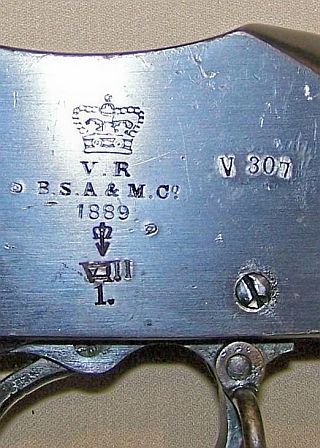
The Martini Metford Mk II Rifle and Mk III Cavalry Carbine
By the early 1890s, with fear of the Zulus to their north and political tensions between Britain and the Transvaal rising, the Natal Government saw a pressing need to upgrade again. The Imperial forces were rearming with the new Magazine Lee Metford in .303" calibre and this weapon was requested by Natal. For reasons similar to those which had previously applied, this was not to be. As a compromise, the Volunteers were issued upgraded Martini rifles and carbines in .303 calibre. The mounted units received the Martini Metford Mk III Cavalry Carbine and the infantry, the Martini Metford Mk II Rifle. These were first issued in 1895, with a subsequent batch of each being received in 1897. In all, it would seem on a Martini Metford Mk /I Rifle that 1 780 carbines and 1 030 rifles were acquired (Skennerton, 1989, pp 395, 409). Following the seared hands experienced during the Zulu War, the Natal Forces requested and received wooden hand guards. On the rifle, the hand guard covered the barrel behind the rear sight to the action, and on the carbine, from the rear sight to the nose cap band. As fittings to Martini Metfords, these wooden hand guards were unique to Natal. Both the Pattern 1875 and cutlass bayonets imported for the Swinburn rifles fit the Martini Metford rifle, but whether they were reissued is unknown.
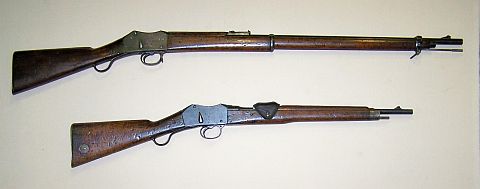
The Martini Metford Mk II Rifle was a stop-gap which, in many respects, should never have been produced. First approved by the War Office in January 1890 as a conversion pattern of the Martini Henry Mk II to the new .303" calibre, it was initially known as the Martini Henry Mk VI. It was, however, produced as a new rifle by the Birmingham Small Arms Company to complete a contract for the parent Martini Henry (Skennerton, 1983, p154). To minimize machining problems and costs, as many Martini Henry parts as possible were used. This resulted in a barrel of Martini profile but chambered and bored for the smaller .303" cartridge, a net gain in weight of almost a pound to a total of 91bs 110z (4,394 kg). Furthermore, sighting and chamber problems led to delays, and by the time the rifles were delivered they were obsolescent. These rifles proved most unpopular: They were only single shot and weighed more than the contemporary Lee Metford and Lee Enfield magazine rifles (Paterson, 1985, p93).
Conversely, the Model 1892 Martini Metford Mk III Cavalry Carbine, a conversion of the Martini Henry Rifle Mk II, was a handy weapon weighing less than 7 lb (3,175 kg). This carbine immediately proved popular with the mounted volunteers and, along with its successor, the Martini Enfield Cavalry Carbine Mk I, it remained in service during the Boer War to arm specialists in the volunteer units such as machine gunners. Even later it was issued as a police weapon and saw active service in the Bhambatha Rebellion (1906) with black constables.
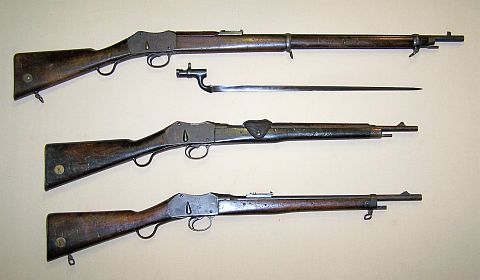
Martini Metford Specifications
| MM Mk II (R) | MM Mk III (C) | |
|---|---|---|
| Overall length: | 49.75 in (126.36cm) | 37.3 in (94.74 cm) |
| Barrel length: | 33.25 in (84.45 cm) | 21.0 in (53.34 cm) |
| Weight: | 9lb 11oz (4.394 kg) | 6lb 12oz (3.06 kg) |
| Calibre: | 0.303 in | 0.303 in |
| Rifling: | Metford, 7-groove, segmental, left hand twist | Metford, 7-groove, segmental, left hand twist |
The Martini Enfield Mk I Rifle, the Mk I Cavalry Carbine and the Mk III Artillery Carbine
Shortly before the Boer-War commenced in October 1899, the Volunteers were re-equipped with Martini Enfield Mk I Rifles and Mk I Cavalry Carbines. The number of weapons obtained is uncertain, but they appear to have received a far wider distribution than the Martini Metford Mk II Rifles, with issues to both the line regiments and the mounted units in their newly perceived role as mounted infantry rather than cavalry (Paterson, 1985, p93). The unpopular Martini Metford Rifles were stored at Pietermaritzburg and held in reserve. During the Boer War, these were eventually used to arm various town guards in Natal and East Griqualand, including Ladysmith.
Both the Martini Enfield rifle and carbine were upgrades of earlier Martini Henry rifles, being respectively derived from the Mk III and the Mk II. They were approved for manufacture in October 1895 and August 1896. The main difference between these and earlier conversions involved the use of the fivegrooved Enfield rifling in place of the Metford pattern which had proved vulnerable to erosion from the new cordite-loaded .303" cartridges. As in the case of the Martini Metfords, Martini Enfield carbines sent to Natal were also fitted with the unique wooden hand guard. Interestingly, on the Martini Enfield rifle, a hand guard similar to that originally supplied on the Natal Pattern Mk II Martini Metfords had become standard.
The socket bayonet provided with the rifle was the pattern 1895, which, when fixed, projected from the underside of the barrel. Photographic and written evidence suggests that these bayonets were issued on a limited basis, but being found to be ineffective, were soon withdrawn. As in the case of the Swinburn Henrys, Mk I Martini Enfield rifles of the Natal Government pattern are encountered without the volunteer marking. It is possible that these may have been issued to units raised in Natal at the start of the Boer War such as Thorneycroft's Mounted Infantry and the Imperial light Horse, which are widely known to have carried this type of rifle during the Natal campaign of 1899 to 1900.
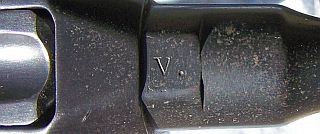
Also issued, to the Natal Field Artillery, but probably too late to see active service during the Boer War, was the Martini Enfield Mk III Artillery Carbine. Volunteermarked carbines of this model are found in two versions, probably indicating that two batches were imported at different dates. One has the standard open barrel and the other a typical Natal hand guard as found on the cavalry carbines. Enfield records indicate that those with hand guards were modified in 1905 with examples of the other pattern being found to be dated 1900. As in the case of the Martini Metford and Enfield cavalry carbines, these were converted from Martini Henry Mk II rifles. They fit the Pattern 1888 bayonet which was later issued with the Lee Enfield Rifle.
| ME Mk I (R) | ME Mk I (CC) | ME Mk III (AC) | |
|---|---|---|---|
| Overall length: | 46.5 in (118,1 cm) | 37.3 in (94,7 cm) | 37.3 in (94,7 cm) |
| Barrel length: | 33.2 in (84,3 cm) | 21 in (53,3 cm) | 21 in (53,3 cm) |
| Weight: | 8 lb 5 oz (3,77 kg) | 6 lb 11 oz (3,03 kg) | 7 lb 5oz (3,32 kg) |
| Calibre: | 0.303 in | 0.303 in | 0.303 in |
| Rifling: | Enfield, 5-groove, concentric, left hand twist | Enfield, 5-groove, concentric, left hand twist | Enfield, 5-groove, concentric, left hand twist |
| Sighting: | 1800 yds (1 645m) | 2000 yds (1 828m) | 2000 yds (1 828m) |
Following the Jameson Raid, hostilities between Britain (supported by her loyal colonies, the Cape and Natal) and the Boer Republics of the Transvaal and Orange Free State became inevitable. War commenced on 11 October 1899. Initially outnumbered, the British unwisely decided to defend north of the Tugela, thereby overstretching their limited resources. Their forces included scouts from several mounted regiments of the Natal Volunteers. Following the minor tactical successes at Talana and Elandslaagte, Sir George White, with his outmanoeuvred forces, retreated to Ladysmith, an important rail junction which he had decided to defend. Thus on 2 November 1899 commenced the historic siege which influenced the course of the Boer War and provided the Natal Volunteers and their Martini Enfields with at least one fleeting moment of glory.
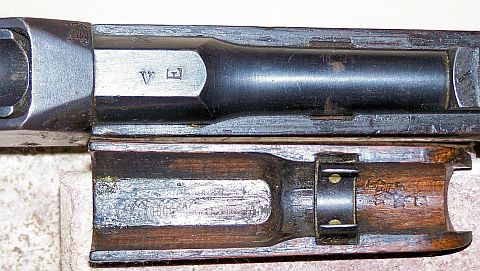
Ladysmith is surrounded by hills and, predictably, these were soon occupied by the Boers, upon which they placed artillery to bombard the town. A particular nuisance to the defenders was a 6 inch Creusot (Long Tom) on a prominent koppie, Gun Hill, adjacent to Lombard's Kop. Sir George White agreed to an attack on the night of 7/8 November and, selected to take part, were some 650 men, comprising 500 Natal Volunteers, guides, a few Royal Engineers and about a hundred troopers from the Imperial Light Horse, a regiment of refugee Uitlanders which had already distinguished itself at Elandslaagte. Both the Natal Volunteers and the Imperial Light Horse were similarly equipped with Martini Enfield rifles, but without bayonets.
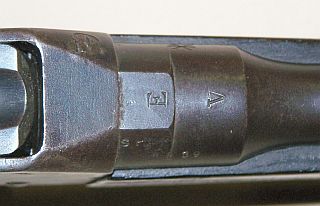
The attackers proceeded along a road that led around the northern slope of Gun Hill and Lombard's Kop, fortunately bypassing an unobservant Boer picket on a small spur where it ran close under Gun Hill itself. Men of the Border Mounted Rifles were positioned on the right and left flanks to guard against a possible Boer counter-attack while a central storming party of 200 Natal Carbineers and Imperial Light Horse climbed the hill in stockinged feet. Steadily they progressed until suddenly the Boers on the spur behind them woke up to what was happening and commenced firing wildly from behind. The Boers on the top of Gun Hill soon joined in. The situation became critical. Fortunately, on impulse, one of the officers resorted to bluff, crying 'Fix bayonets!' The men responded by clinking their rifles to add credibility to the hoax. The Boers guarding the position panicked and fled.
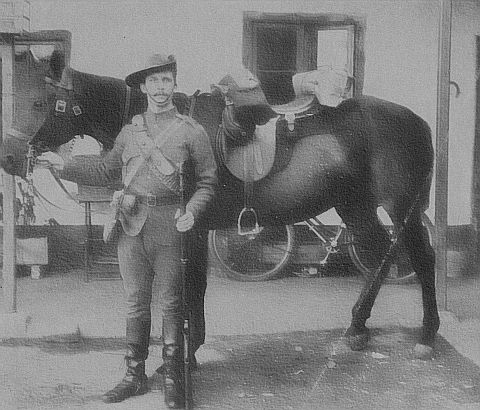
Two guns were found, the Long Tom and also a howitzer. The breech blocks were removed and charges of guncotton inserted into the barrels which exploded with a roar that aroused Ladysmith. The withdrawal was orderly and uncontested. Casualties were amazingly light with only a few wounded, of whom one subsequently died. The incident did much to raise morale in the beleaguered town, but perhaps the last laugh was on the side of the Boers who sent the damaged Long Tom to the Pretoria railway workshops where it was repaired (Coghlan, 2000, pp13-14).
Following the relief of Ladysmith, the advance to Vryheid and the end of the Natal campaign, the enlistment articles of the Volunteers, which bound them to the Colony, prevailed. With the exception of the Border Mounted Rifles, who served for six months in the Free State, the Natal Volunteers were relegated to the role of frontier guards. Being merely secondline troops, they retained their o~solescent Martini Enfields until the end of hostilities. Some of the bolder individuals enrolled in the Volunteer Composite Regiment, which, equipped with magazine rifles, remained on active service until peace was declared on 31 May 1902. This unit earned a fine reputation for scouting and marksmanship (Hurst, 1945, p 122).
The end of the Boer War marked a reappraisal of the Natal Volunteer movement since, by the cessation of hostilities, both the system and its rifles were outdated.
The Volunteer Act of 1895 was the first to receive Government attention. In terms of this legislation, when the Boer War commenced, fewer than 2 000 men out of a potential of 12 000 were available for service, these men having volunteered previously. After the war, the Government responded with the introduction of the Militia Act of 1903, which provided for 4 000 Active militiamen, both volunteer and ballotee, to be available in times of peace. This number could be increased in an emergency by calling up reservists aged from 18 to 50 (Stuart, 1913, pp 39-43).
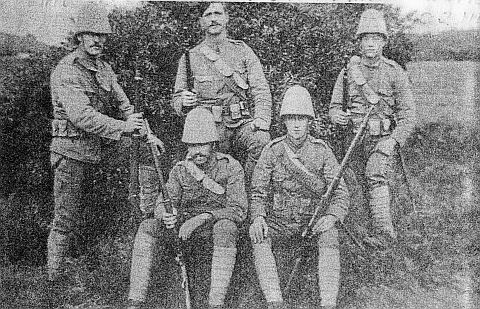
With vast stocks of surplus rifles available, rearmament presented no problem. The Volunteers received a supply of Long Lee Enfield Mk 1* Rifles from Britain in 1903 (Paterson, 1985, pp 103-4). Following relegation to the Native Police, the Martini Metford carbines remained in service until about 1910. The Martini Enfield rifles appear to have been placed in reserve and then sold off on the civilian market. Martini Metford and Martini Enfield carbines were eventually reissued to the cadets, where they remained in use for more than seventy years.
THE MAGAZINE RIFLE
The Lee Enfield Mk 1*
Originally approved as the Enfield Magazine Mk I Rifle in November 1895, the bolt action Lee Enfield can be regarded as the standard issue British rifle of the Boer War. The Mk 1*, introduced in May 1899 and issued to the Volunteers in 1903, only differed from its earlier version by the elimination of the clearing rod with its grooved forend and the corresponding hole in the nose cap. It was also the direct descendant of the original Lee Metford Mk I Magazine Rifle, with its seven-grooved barrel, which was introduced in 1889 to replace the Martini Henry. This upgraded Lee Enfield rifle, with its five-groove rifling and ten round magazine, proved to be an enduring design which, despite undergoing extensive modification and further upgrades, remained in British production for 60 years and even longer in India. Those received by the Natal Militia were amongst the last of the Long Lees produced by the Enfield and BSA factories before the introduction of the modified Short Magazine Lee Enfield shortly after the Boer War. These are invariably dated 1902 and 1903 and were thus new at the time of issue.

| Overall length: | 49.5 inches (125,7 cm) |
| Barrel length: | 30.2 inches (76,7cm) |
| Weight: | 9 lb 4 oz (4,19 kg) |
| Calibre: | 0.303 in |
| Rifling: | Enfield, 5-groove, concentric, left hand twist |
| Sighting: | 1800 yds (1 645m) with 2 800 yds (2 559m) on the dial sight |
| Magazine capacity: | 10 rounds |
In 1905 an act was passed, primarily aimed at the black population and imposing a poll tax on all males except those who had already paid hut tax. This was greatly resented and, on 8 February 1906, precipitated violence on the farm, Trewirgie, near Thornville Junction in the Pietermaritzburg area of Natal. Two Natal Policemen were killed and martial law was declared with four militia units being mobilized. This initial outbreak ended in courts martial and the execution of fourteen black people.
The Trewirgie incident marked the start of a period of unrest and bloodshed, which became known as the Bhambatha Rebellion after Chief Bhambatha kaMancinza of the amaZondi clan from the Umvoti area. Bhambatha, with a group of followers, headed towards the Nkandla district in Zululand. There he joined forces with those of the 96 year old Chief Sigananda Shezi of the amaCube who, in his early days, had been one of King Dingane's warriors. On the way, Bhambatha's band was involved in several minor skirmishes with the police. Then and later, several white people were killed and mutilated for medicinal purposes. These incidents hardened attitudes and encouraged the subsequent bloodbaths which followed.
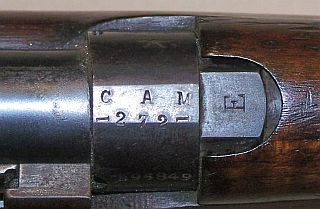
On the side of the Natal Government, Colonel Duncan McKenzie, a skilled tactician, was placed in command of its forces in Natal and Zululand. While the Zulu rebels, with their fear of the rifle and large concentrations of troops, intended to overcome isolated detachments and thus spread the rebellion through small victories, McKenzie planned to crush and mercilessly exterminate the largest groups he could possibly find.
One of Colonel McKenzie's many advantages was his excellent intelligence department staffed by officers who knew the area intimately and were assisted by many Zulus who had either not joined the rebellion or had changed sides. From one of the latter, information was received that Bhambatha planned to concentrate his force at the junction of the Mome and Insuze rivers with the intention of entering the dense Nkandla Forests through the Mome Gorge. Mckenzie received this information during the evening of 9 June and immediately arranged to concentrate his forces around the Mome Gorge. These included the Natal Carbineers, .the Durban Light Infantry, the Natal Field Artillery, Royston's Horse, the Northern Districts Mounted Rifles and the Natal Police. During the remaining hours of darkness McKenzie's forces converged upon the gorge in three columns and, by the time the mist lifted the following morning, they had sealed off the route by which the Zulus had arrived and also commanded the gorge itself (Stuart, 1913, pp 295-302).
The action was initiated by a Maxim machine gun which opened fire when it became apparent that the McKenzie's forces had been detected and the Zulu impi was preparing to move out. The artillery, riflemen and additional machine guns joined in almost immediately and the rebels found themselves surrounded by a semicircle of fire facing two deadly alternatives: Either to run the gauntlet up the gorge towards their original destination, or, by turning left, to hide in a dense patch of forest known as the Dobo bush. Some elected to make the dash and of these, some survived. The remainder chose to hide in the Dobo bush itself. The Dobo bush, however, was a death trap since it could be surrounded, a movement which was completed by the early afternoon, while it was drenched with shrapnel by the Natal Field Artillery. This bombardment was followed by a thorough and merciless downwards drive by the troops through the bush towards the Mome River. Fewer than a hundred rebels are believed to have escaped (Stuart, 1913, pp 303-9).
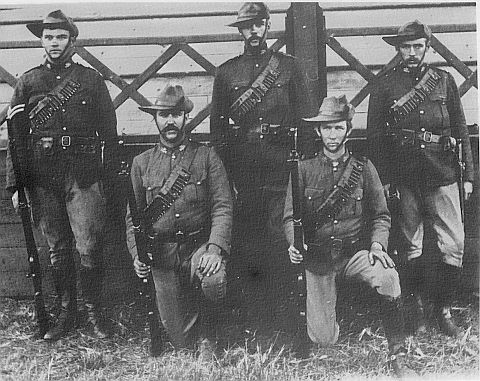
Perhaps it is as well that no first-hand accounts of exactly what happened in that dense patch of bush have come to light. Suffice it to say that some of the men from the Natal regiments involved were haunted for years afterwards by their experiences of shooting fellow human beings with magazine rifles at close range using Mk V expanding bullets.
By this time Bhambatha, himself, was already dead, having been stabbed with an assegaai by a native levy and then fatally shot by a black policeman, probably using a Martini Metford Mk III Cavalry Carbine, shortly before the initial shelling commenced. Some five hundred Zulus were killed at Mome Gorge and, significantly, there is no record of any having being wounded or taken prisoner. The Natal forces suffered about a dozen casualties, four of whom later died.
Although the rebellion was by no means over, the action at the Mome Gorge marked its turning point. Following several further skirmishes and a final slaughter at the Izinsimba River, where the number of rebel dead equalled those at Mome, it faded away during July. The Militia were disbanded in September and, thereafter, rebellion-related arrests were left to the police.
IN CONCLUSION
The retaliation against the Bhambatha Rebellion marked the last active service of the Natal regiments as the independent fighting force of the Natal Colony. Perhaps, too, it completed the full evolution of both spirit and effectiveness as the volunteer movement evolved from rank amateurs into a formalised militia. Starting with the lack of discipline or perhaps cowardice displayed at the Bushman's River Pass, through the selfless but futile heroism of Isandlwana, the dashing courage of Gun Hill and, finally, the premeditated and systematic slaughters at the Mome Gorge and Izinsimba, the circle was complete.
Following Union in 1910, it was decided to replace the separate forces of the erstwhile colonies with a unified defence force, modelled on the citizen army of Switzerland and controlled by the central government. The Defence Act of 1912 was passed, giving rise to the formation soon afterwards of the Active Citizen Force which incorporated thirty new regiments. However, primarily in the Cape and Natal, and following a few mergers to strengthen certain units, the old volunteer regiments re-emerged to serve yet again through the First and Second World Wars and the later Border War. Some of these remain with us still, but for how much longer is uncertain.
| Privately owned | [1854] | Swinburn Henry Rifle | [1875 - 1896] |
| Pattern 1839 or Pattern 1842 | [1855 - 1860] | Martini Metford Mk III Cavalry Carbine | [1895 - 1906] |
| Pattern 1853 and Pattern 1856 Rifle1 | [1854] | [1875 - 1896] | |
| Calisher & Terry Carbine | [1863 -1875] | Martini Enfield Mk I Rifle | [1895 - 1902] |
| Snider Cavalry Carbine | [1874 • 1894] | Martini Enfield Mk I Cavalry Carbine | [1899-1903] |
| Snider Rifle2 | [1879] | Martini Enfield Mk III Artillery Carbine3 | [1901? -1910] |
| Swinburn Henry Carbine | [1875 - 1895] | Lee Enfield Mk 1* Rifle4 | [1903 - 1921] |
BIBLIOGRAPHY
Return to Journal Index OR Society's Home page
South African Military History Society / scribe@samilitaryhistory.org